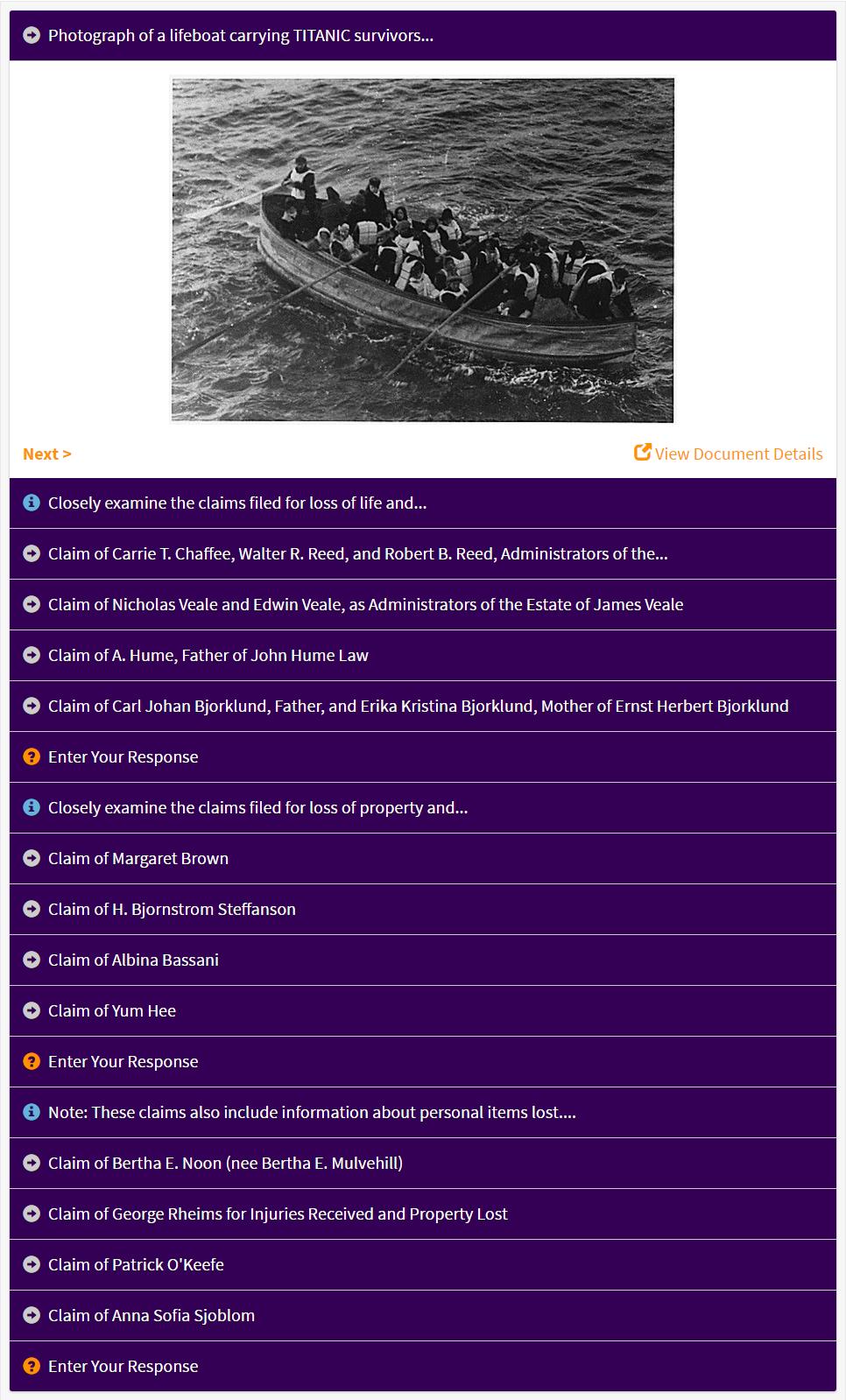 See activities created with the Making Connections tool.
See activities created with the Making Connections tool.Present primary sources as a string of documents to convey historical progression and prompt students to make connections among events. Provide or ask students to fill in the connections between documents.
Learning Objectives
- Analyze relationships among historical documents
- Understand the interconnectedness of historical events, individuals, and/or concepts
- Understand how to put pieces of historical evidence together
- Explore historical causation and question historical inevitability
- Understand that interpretations of history are tentative
- Understand how the choice of evidence or sources influences the historical narrative told
To Create a Making Connections Activity:
- Go to My Activities and create a new activity.
- Choose documents to include; pull in all pages of a document, or only specific pages. Add your own text. Reserve spots for student responses. You can also upload images to include documents, photographs, or other images from sources beyond the National Archives. Arrange all of these elements in the order you'd like students to see them in. Decide whether students will be able to access all of the details available for the documents (including dates and descriptions) or simply the document images and titles.
- Write instructions for your students, including an introduction and conclusion. You can include questions or a follow-up assignment in your conclusion. Students can email their responses to you if desired.
- Preview the student activity and create a snapshot.
- Lastly, describe your activity to other teachers by providing a summary. Tag it with the appropriate historical era, historical thinking skill, level of Bloom's Taxonomy, and grade level. You can also include detailed teaching instructions.
Teaching Tips
- Model document analysis with at least one document before asking students to begin the activity. Remind students to analyze the rest of the documents carefully.
- Ask students to hypothesize about possible connections between documents before beginning the activity. This can act as a pre-assessment and help guide students’ thinking. Once students begin to examine documents, they have a purpose for viewing them.
- You can insert places for student responses between documents in the activity to allow students to demonstrate their understanding of how historical events are connected — allow them to fill in the blanks in the story.
- You can include statements or questions between documents, immediately followed by spots for student response.
- You may wish to guide students by telling them what the focus of their analysis should be since there is not a definitive right and wrong set of connections.
- If the documents will not be in chronological order, inform students that the focus of their analysis should be on the relationship between the documents, not chronology.
- Engage students in discussion about other possible links between documents. These discussions provide an opportunity for students to think creatively and analytically. Explore the links suggested to determine if there is a basis for them. As part of the discussion, share a list of links that you have created as one possible set to compare with students.'
- To draw students’ attention to cause-and-effect relationships in history, choose documents for your activity that represent changes in viewpoints, theories, or practices over time.
- To help students understand major concepts, events, and historical figures in a particular academic unit, create a cloze activity. In choosing documents, you are supplying an outline of the unit and students fill in the connections between. You can use this as an end-of-unit review to check for understanding, or at the beginning of a unit as a pre-assessment. (Then revisit the same activity toward the end of the unit, filling in the blank boxes again.)
- Give students the opportunity to think creatively regarding a topic and evidence presented by providing less background information and asking them to be creative as they make their connections. During or following the activity, engage students in discussion about several possible connections.
- Instruct students to complete two different activities on a similar topic, choosing a different set of documents for each, to show how the documents that a historian chooses to look at can change one’s view of that era or event. After completing both activities, ask students to contrast the historical conclusions they reached based on each set of evidence.
- Or follow up an activity by asking students to suggest other documents that could have been included instead. Encourage them to consider whether new evidence would change the historical narrative or their own conclusions.
- This tool can be adapted for use with different ages and learning levels. Students can perform simple storytelling using images, media, or simple textual documents. A set of documents that clearly shows a progression of events, for instance, can teach causation in the early grades.
 See activities created with the Making Connections tool.Present primary sources as a string of documents to convey historical progression and prompt students to make connections among events. Provide or ask students to fill in the connections between documents.
See activities created with the Making Connections tool.Present primary sources as a string of documents to convey historical progression and prompt students to make connections among events. Provide or ask students to fill in the connections between documents.


